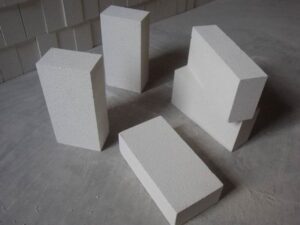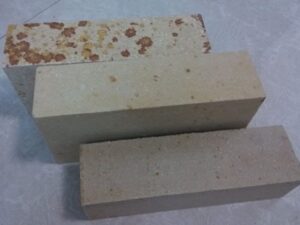Description
The Unsung Heroes of Heat: Understanding Clay Refractory Bricks
In the world of high-temperature applications, from fiery furnaces to cozy fireplaces, clay refractory bricks stand as silent, steadfast protectors. These unassuming blocks are the unsung heroes of industries that rely on intense heat, offering a robust barrier against extreme conditions. But what exactly are clay refractory bricks, and why are they so crucial?
What are Clay Refractory Bricks?
Simply put, clay refractory bricks are specialized bricks designed to withstand extremely high temperatures without deforming, melting, or losing their structural integrity. Unlike standard bricks used in construction, these bricks are formulated from carefully selected clays and other materials, then fired at incredibly high temperatures during manufacturing. This process imparts specific properties that allow them to endure the most demanding thermal environments.
Key Properties of Clay Refractory Bricks:
- High Refractoriness: This is the defining characteristic. Refractoriness refers to the brick’s ability to withstand high temperatures without softening or collapsing. The specific temperature resistance depends on the brick’s composition and manufacturing.
- Thermal Stability: Refractory bricks must maintain their dimensions and shape even when subjected to repeated heating and cooling cycles. This minimizes cracking and spalling (surface breaking).
- Chemical Resistance: These bricks often need to resist the corrosive effects of molten metals, slags, and gases present in industrial processes.
- Slag Resistance: A crucial property in applications involving molten materials, slag resistance refers to the brick’s ability to resist erosion and chemical attack from slag.
- Thermal Conductivity: The thermal conductivity of refractory bricks can be tailored depending on the application. Some bricks are designed to insulate, while others are designed to conduct heat efficiently.
- Mechanical Strength: While not as paramount as in structural bricks, refractory bricks must still possess sufficient mechanical strength to support their own weight and withstand the stresses imposed by the surrounding environment.
Manufacturing the Indomitable Block:
The creation of clay refractory bricks is a meticulous process that involves:
- Material Selection: The selection of appropriate clays, often including fireclays, flint clays, and semi-flint clays, is critical. Additives like alumina, silica, and magnesia may also be incorporated to enhance specific properties.
- Mixing and Shaping: The raw materials are carefully mixed and ground to achieve a uniform consistency. The mixture is then shaped into bricks using various methods, including extrusion, pressing, and casting.
- Drying: The shaped bricks undergo a carefully controlled drying process to remove moisture and prevent cracking during firing.
- Firing: This is the critical step where the bricks are fired in large kilns at extremely high temperatures. The firing process sinters the clay particles together, creating a strong, durable, and heat-resistant structure.
Applications Across Industries:
Clay refractory bricks are indispensable in a wide range of industries, including:
- Metallurgy: Lining furnaces, ladles, and converters used in steelmaking, aluminum production, and other metal processing operations.
- Cement Industry: Lining rotary kilns and preheaters used in cement manufacturing.
- Glass Manufacturing: Constructing the furnaces used to melt and shape glass.
- Ceramics Industry: Supporting kilns used for firing pottery, porcelain, and other ceramic products.
- Power Generation: Lining boilers and incinerators in power plants.
- Petrochemical Industry: Lining reactors and furnaces used in refining and chemical processing.
- Residential Applications: Lining fireplaces, wood stoves, and pizza ovens.
Looking Ahead:
The demand for high-performance refractory materials is constantly evolving. Research and development efforts are focused on improving the thermal stability, chemical resistance, and lifespan of clay refractory bricks. New materials, such as high-alumina bricks and bricks reinforced with fibers, are being developed to meet the ever-increasing demands of modern industries.
Conclusion:
Clay refractory bricks are far more than just blocks of baked clay. They are engineered materials designed to thrive in the most punishing thermal environments. Their robust properties and versatility make them essential components in countless industrial processes and even in our homes. Next time you see a fiery furnace or a crackling fireplace, remember the silent, steadfast protection provided by these unsung heroes of heat – the clay refractory bricks.














Reviews
There are no reviews yet.